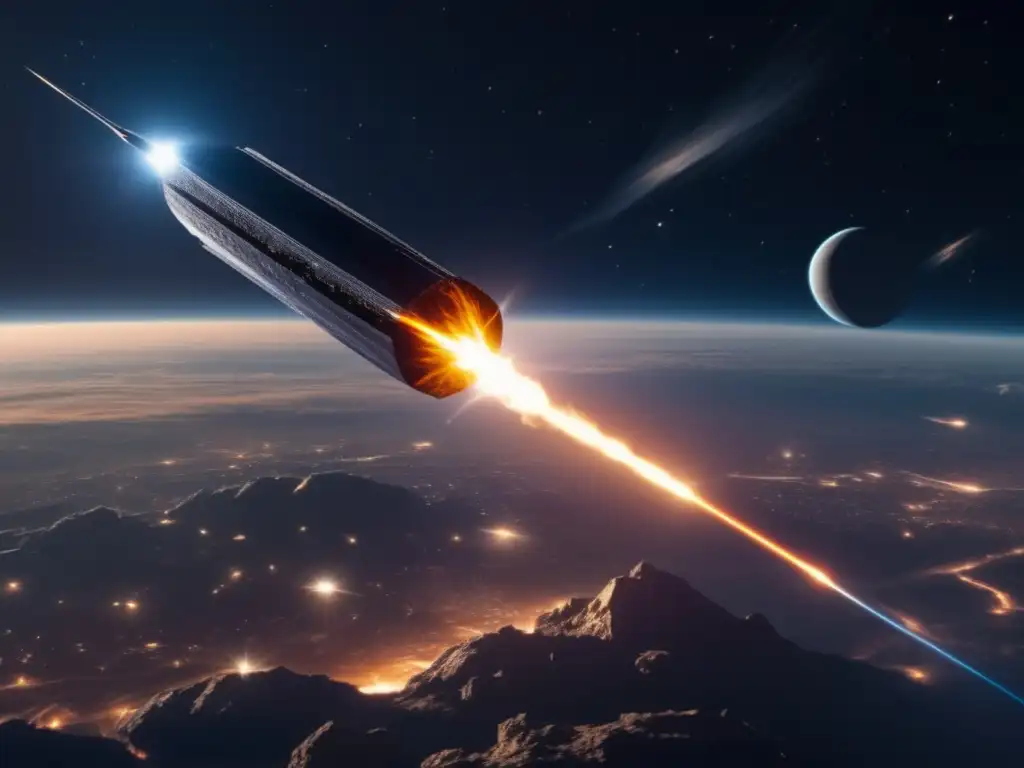The Story Of 2020 SO: From Asteroid To Rocket Booster

Introduction
The discovery and exploration of asteroids has been an important area of research by scientists and space enthusiasts. In 2020, the world witnessed a unique event where an asteroid turned out not to be an asteroid at all, but actually a piece of space debris from a long-forgotten space mission.
This article will explore the fascinating story of 2020 SO and how it went from being classified as an asteroid to becoming a rocket booster.
The Discovery of 2020 SO

The Initial Observations
On September 17, 2020, astronomers using the Panoramic Survey Telescope and Rapid Response System (Pan-STARRS) in Hawaii first discovered an object they believed was a small asteroid.
Further observations by NASA’s Center for Near-Earth Object Studies (CNEOS) determined that the object was orbiting Earth, rather than the Sun, and was only about 50 feet (15 meters) in diameter.
The Realization
Additional observations revealed that the object's orbit closely matched that of the Earth, leading some scientists to speculate that it might be a small asteroid temporarily captured by our planet's gravity.
However, as further analysis was conducted, it became clear that this was no asteroid at all, but rather the upper stage of a Centaur rocket, which was launched in September 1966. The object had been drifting through space for over 50 years before it was discovered near Earth.
The Retrospective Identification
After identifying the object as space debris, astronomers were able to identify the rocket by examining archives of historic satellite imagery. The object was eventually designated as 2020 SO.
The Journey of 2020 SO

Observations and Approach to Earth
As 2020 SO approached Earth, astronomers had an unprecedented opportunity to study this piece of space debris. In December 2020, the Virtual Telescope Project in Italy observed 2020 SO from its observatory in Rome, capturing clear images of the object.
On December 1, 2020, the object made its closest approach to Earth, reaching a distance of only 31,000 miles (50,000 kilometers) away from our planet's surface. This close approach allowed scientists to obtain detailed radar measurements of the object and learn more about its composition and structure.
Becoming a Rocket Booster
In November 2020, NASA's Jet Propulsion Laboratory (JPL) announced that it would attempt to use 2020 SO as a target for a test of its planetary defense system. The system uses the gravity of a spacecraft to slightly alter the trajectory of an asteroid, potentially preventing a future collision with Earth.
However, in December 2020, it was announced that NASA had instead decided to use 2020 SO as a booster for its upcoming lunar mission. The Centaur upper stage of the rocket was repurposed, and engineers planned to use its residual fuel to redirect 2020 SO towards the Moon to support the Artemis program.
This will be the first time a piece of space debris has been used as a rocket booster and represents an innovative way to reduce waste and costs associated with space missions.
Frequently Asked Questions

-
What is 2020 SO?
It was initially believed to be an asteroid, but later identified as the upper stage of a Centaur rocket launched in 1966.
-
How did 2020 SO end up near Earth?
It had been drifting through space for over 50 years before it was discovered near Earth.
-
Was there any concern that 2020 SO posed a threat to Earth?
No, it was determined that 2020 SO would not pose a threat to Earth during its close approach in December 2020.
-
What is the Artemis program?
The Artemis program is NASA's initiative to send humans to the moon and establish a sustainable presence on its surface.
-
Can space debris be repurposed for use in space missions?
Yes, 2020 SO is an example of how space debris can be repurposed for use in space missions, reducing waste and costs associated with these missions.
Conclusion
The story of 2020 SO is a reminder of the ever-changing nature of space exploration. It also highlights the ingenuity of scientists and engineers who can find new uses for objects that were previously considered useless or even a nuisance. The ability to repurpose space debris for use in future missions is an exciting development that could have significant implications for the future of space exploration.
We hope this article has provided valuable insights into the story of 2020 SO, and we encourage readers to share their thoughts on this fascinating topic in the comments section below. Thank you for reading, and please consider subscribing to www.asteroidrealm.com for more articles like this one.
Additional Resources

For more information on asteroids and space exploration, please visit the following resources:
- NASA Asteroid Exploration Program
- International Astronomical Union - Near-Earth Objects
- European Space Agency - Near-Earth Objects
 The Asteroid Hunters: Pioneers In Space Rock Discovery
The Asteroid Hunters: Pioneers In Space Rock Discovery Asteroid 16 Psyche: The Golden Asteroid
Asteroid 16 Psyche: The Golden Asteroid Exploring Mathilde: A Journey To A Carbonaceous Asteroid
Exploring Mathilde: A Journey To A Carbonaceous AsteroidIf you want to discover more articles similar to The Story Of 2020 SO: From Asteroid To Rocket Booster, you can visit the Asteroid Discoveries category.
Leave a Reply

Articulos relacionados: